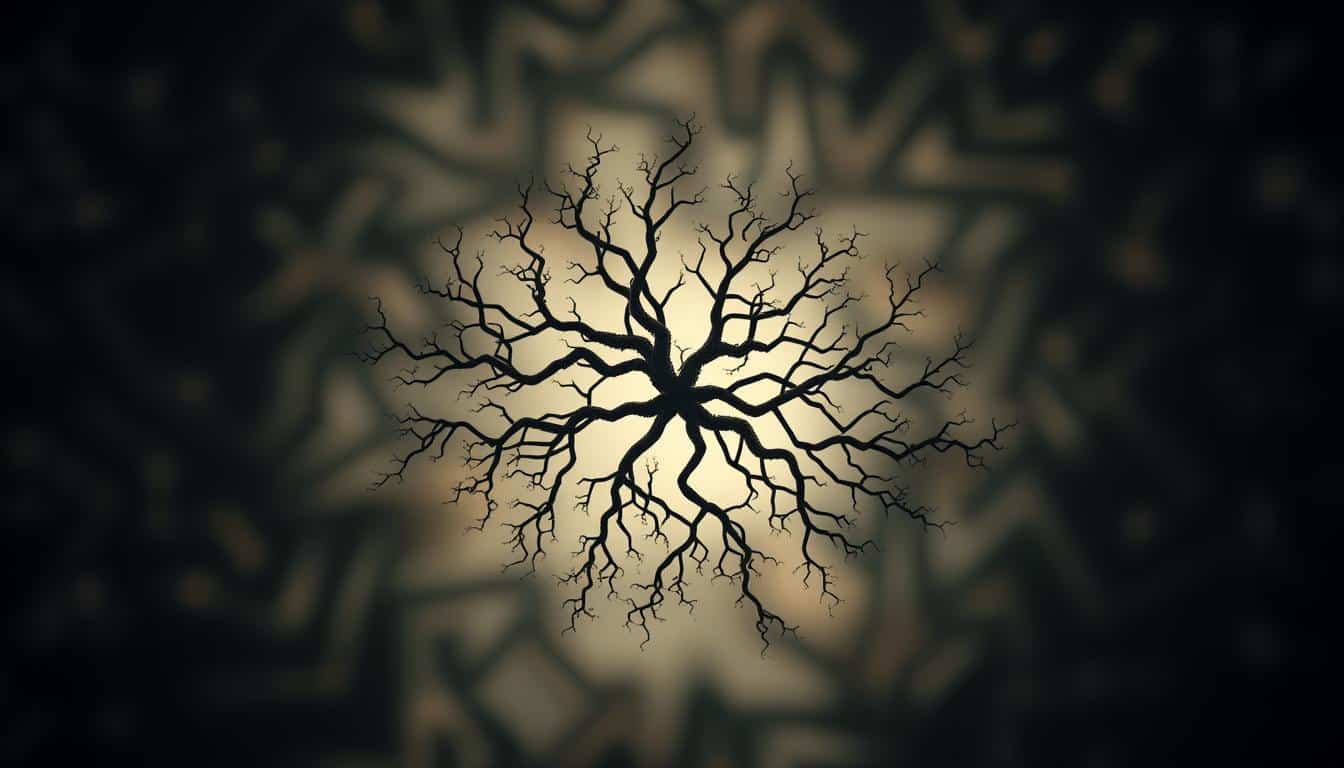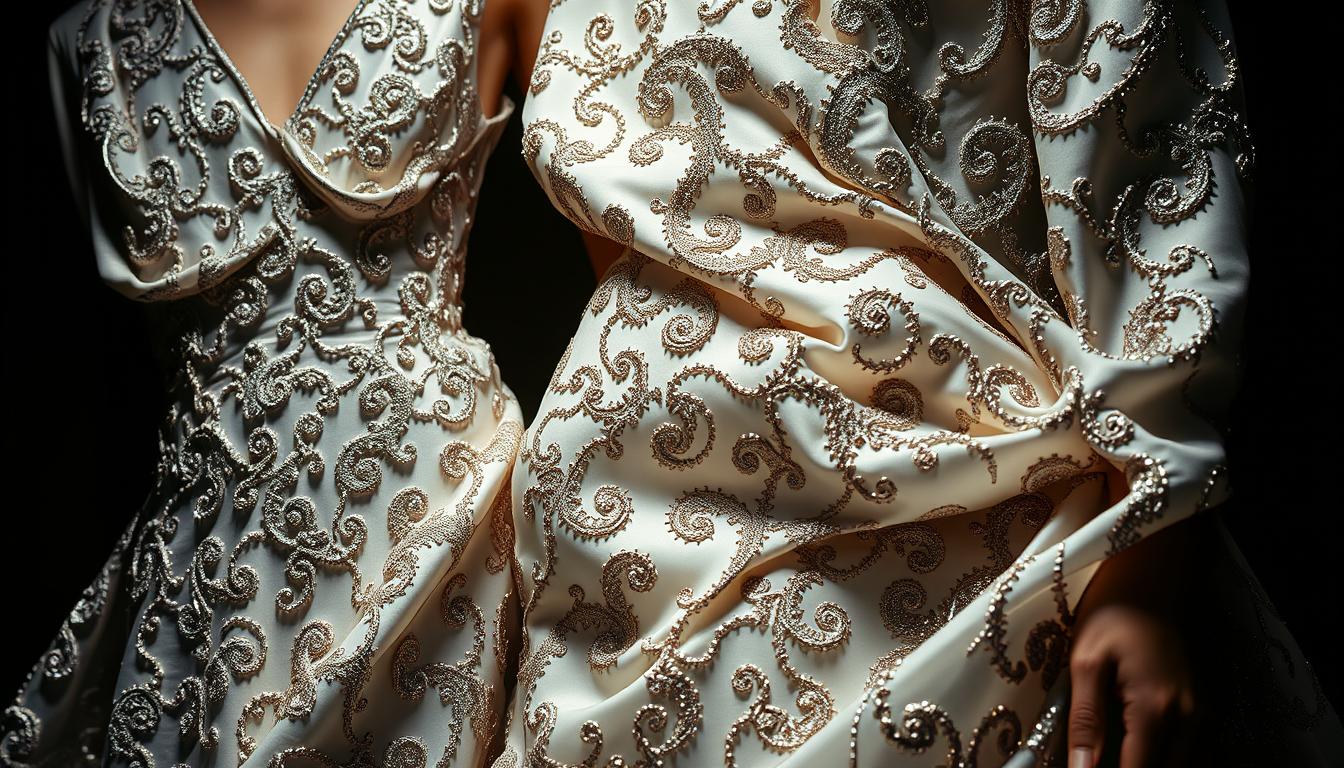Fractal Analysis shows how closely Indigenous Art and Pottery Patterns are linked. They uncover a layer of cultural meaning deeply rooted in African societies. This study connects math with art. It shows how fractals, a math idea, are seen in these groups’ visual works.
By looking into its history and how African Fractals appear in artifacts, we’ll see. Centuries-old traditions show not just beauty but complex math in their designs.
Understanding Fractals and Their Significance
Fractals are complex shapes with a property called self-similarity. This means they look the same at any size. You can see such shapes in nature and in things humans make. Look at tree branches, coastlines, and clouds. You’ll notice they share fractal traits. These examples show how geometry takes various forms, leading to beautiful and intriguing designs.
Fractals are more than just pretty shapes. They are important in art, building, and many cultures. Artists and builders use these patterns to create harmony in their work. Learning about fractals helps us understand nature and the mathematical patterns in our lives. This shows us how geometry is not just for math class. It’s part of what we see and experience every day.

Historical Overview of Fractals
The History of Fractals began to take shape in the late 20th century. That’s when mathematician Benoît Mandelbrot coined the term “fractal” in 1977. This event was crucial for our grasp of complex shapes that look alike at different sizes. Though “fractal” is a modern word, the idea existed in various cultures for many years.
Ancient art shows that many understood fractals long ago. Especially in Africa, people used fractal designs in art and buildings before the West did. This shows that math ideas can cross over places and grow in different societies.
Art and math coming together deepens our fractal knowledge. They act as a link between studying science and expressing culture. As we dive more into the History of Fractals, Benoît Mandelbrot’s work helps us see math’s impact on culture.
Fractals in Nature: The Mathematical Basis
Fractals in Nature display amazing patterns that link math with the environment. These patterns show a design thread in life and earth forms. For example, tree branches follow fractal geometry, each part looks like the whole tree, at different sizes.
The math behind this is based on geometry principles. Fractal theory shows how complex shapes come from repeating simple steps. We see this in unique snowflakes and plant blood systems, both are symmetrical and fractal.
Coastlines are another example of fractals in Nature. Their outlines, though uneven, show similar patterns when we look closely. Studying these helps us understand nature better. It gives scientists tools to explore life and earth’s processes.
Fractal Geometry in African Culture
Fractal geometry is very important in African culture. It shows how math and art are closely linked. Most indigenous art forms have patterns that show deep math knowledge. These patterns can be seen in traditional crafts like textiles and beadwork. They use repeated motifs to create beautiful and complex designs.
Dr. Ron Eglash’s research shows that fractal geometry is more than just pretty patterns. It helps us understand how societies are structured and how they build things. For example, village layouts often use fractal patterns for better living. Even traditional hairstyles have these complex patterns. They are symbols of cultural identity and community bonds.
This fractal understanding in African culture breaks down stereotypes. It proves these societies are advanced in integrating beauty and function. The common use of fractal geometry in art highlights a strong heritage. It continues to inspire new creativity today.
Fractal Analysis: Indigenous Patterns in Art, Pottery
Indigenous art is like a story woven with math and beauty. Fractal analysis helps us see this in traditional pottery. The patterns are more than just for show. They tell important cultural stories.
Exploration of Indigenous Art Forms
Indigenous art links the past to now. Artists get ideas from nature. They use shapes and patterns that look like those in the world around them. These designs show a deep understanding of math in nature.
The Role of Fractals in Pottery Designs
Pottery often shows fractal patterns. They mean things like connection and belonging. These patterns pass down knowledge through time. Fractal analysis helps us understand the deep math knowledge in these cultures.
The Intersection of Tradition and Mathematics
The link between Tradition and Mathematics in indigenous cultures is stunning. It mixes art and smarts. Artisans from many backgrounds use math in their art. This mix shows more than beauty. It shows a deep understanding of geometry beyond just decoration.
Indigenous Knowledge systems use these ideas. They show traditional skills include complex math in art. The creations are not random. They are well-planned, blending stories with math.
Geometry is used in textiles, pottery, and carvings. These artisans teach about symmetry, balance, and fractals through their work. This math use strengthens community ties. It keeps traditions alive, linking old with new.
Researchers like Eglash have noted these artistic forms are worth studying. They reveal the big achievements in indigenous methods. This offers a richer respect for these traditions.
Case Studies of Indigenous Art Incorporating Fractals
Exploring indigenous art shows us how culture and math come together. Through fractals, these artworks reflect community values and identities. This section looks at case studies that show fractal designs in African villages and Native American pottery. They highlight cultural significance in a beautiful way.
Examples from African Villages
In Africa, many villages display fractal patterns in their layouts. For example, in Zambia, the way circular huts are grouped shows a fractal organization. It mirrors social and family ties. These patterns are more than just layouts. They carry cultural stories and traditions from the past.
Analysis of Southwest Native American Pottery
Southwest Native American pottery is famous for its colorful designs, including fractals. These designs often mimic nature, like rivers and mountains. The repeating patterns show nature’s connection to the Native American outlook. Fractals play a key role in their art, linking it to the natural world.
Fractal Patterns in Architecture and Urban Planning
Fractal patterns are crucial in architecture and urban planning, especially in African areas. Indigenous architects use fractal geometry for better designs. These designs boost functionality and mirror social structures and community life.
Architecture gains deeper meaning through fractal patterns. Such patterns show complex relationships in a community. Traditional communities arrange their spaces in fractal shapes. This shows a strong link between their culture and how they build.
Experts like Ron Eglash have studied this. They find these designs do two things. They meet people’s needs and hold spiritual meaning. In urban planning, fractal patterns make places better. They create spaces that work well and carry cultural value.
Cultural Significance of Fractals in Indigenous Rituals
The cultural importance of fractals in indigenous rituals is huge. These fractal symbols are found in spiritual artifacts. They add meaning to these ceremonial items. The designs show deep knowledge from the past. They connect different generations with their stories.
Indigenous rituals use geometric patterns for beauty and identity. These fractal designs:
- Strengthen community bonds through shared meanings.
- Act as vehicles for storytelling, passing down history and beliefs.
- Facilitate spiritual practices, deepening the connection to the natural world.
Fractals in indigenous rituals are more than just decorations. They are core to their beliefs and ways of life. The complex patterns show the people’s beliefs, customs, and love for their heritage and the Earth.
Benefits of Fractals in Modern Design
Using fractals in modern design marks a big change in how we see creativity and use. These complex patterns help artists and designers connect with people on a deeper level. They stir emotions and remind us of nature’s beauty, which is why they’re so powerful in art today.
Influence on Contemporary Art and Technology
Fractals open new doors in art and technology. Their complex, yet inviting, nature fits perfectly in different areas, especially in:
- Visual media, where fractal patterns add depth and complexity.
- Computer graphics, making textures and environments more realistic.
- Animation, where designs inspired by fractals bring movement to life.
As technology and art blend, fractals play a crucial role. This mix pushes both fields forward, creating new and exciting works. It shows in galleries and online, where creative minds share their latest projects.
Challenges in Understanding Indigenous Mathematical Concepts
Exploring Indigenous Mathematics brings its own set of challenges. These often start with wrong ideas about these complex systems. People tend to view these concepts through a Western education lens. This can make them misunderstand the depth involved.
Indigenous math is woven into cultural stories and practices. It’s important we see beyond simple explanations. Not knowing the depth of these systems can make us undervalue their math. This includes the complex math you find in fractal patterns.
Common challenges include:
- Oversimplification of Indigenous mathematical principles, limiting a true understanding of their depth.
- Failure to recognize the relationship between cultural context and mathematical concepts.
- Inadequate representation of Indigenous perspectives in mainstream academic discourse.
Understanding Indigenous Mathematics in a deeper way can help us respect and understand it more. Recognizing the role of cultural heritage in math can lead us to value Indigenous cultures’ unique math contributions.
Conclusion
In our study of fractal analysis, we discovered deep ties between native designs and math principles. These insights highlight the importance of seeing fractals in indigenous art and culture. It’s key to not only enjoy their beauty but also to recognize the complex math knowledge these cultures hold.
Fractal patterns show the rich history and math progress in indigenous communities. By valuing their unique views, we better understand math concepts outside Western ideas. These traditions’ focus on fractal analysis is a big part of their culture. It shows their big role in how we see design today.
Our exploration shows the blend of math and art in native patterns teaches modern society a lot. Acknowledging these cultures’ contributions helps us appreciate past and current uses of fractal analysis in various creative areas.



